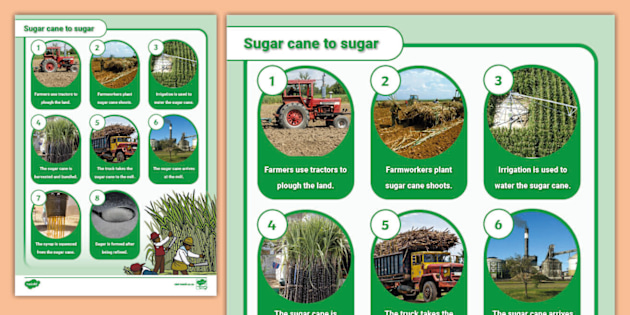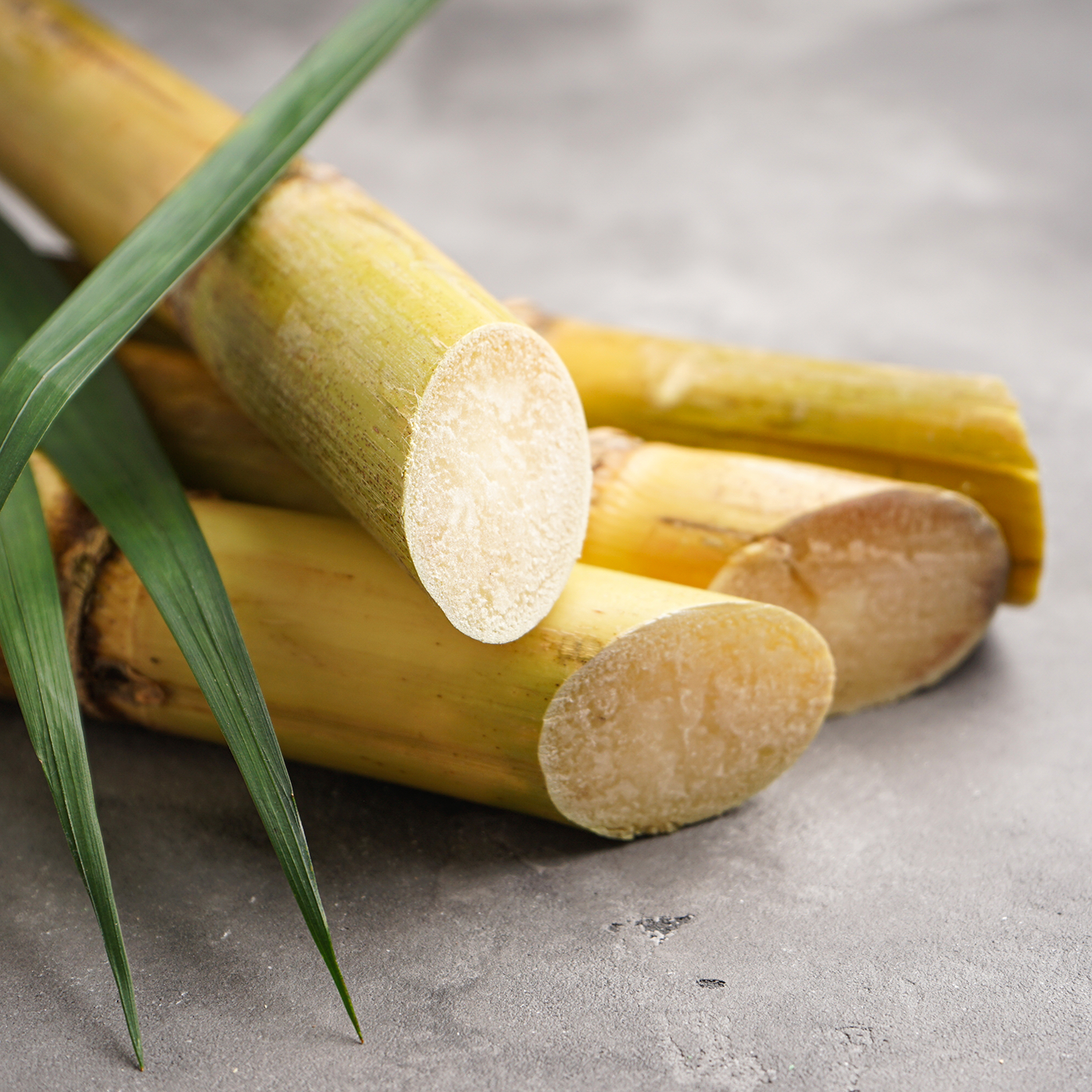Everything About Sugar Canes: What Are Sugar Canes Utilized For and Their Function in International Agriculture?
Sugar walking sticks work as a cornerstone of global farming, largely recognized for their role in sugar manufacturing. They additionally add to the creation of spin-offs like molasses and ethanol. These facets not just sustain different markets however additionally influence economic stability in country regions. The growing of sugar walking canes faces significant environmental obstacles. Comprehending their complex duty motivates additional exploration into their farming methods and sustainability initiatives.
The Agricultural Refine of Sugar Walking Stick Growing
Although sugar walking stick cultivation may vary by region, the essential farming procedure stays constant. The initial step entails choosing high-yielding varieties appropriate for local environments. Prep work of the dirt is vital, usually requiring tillage and the addition of fertilizers to improve fertility. Planting generally occurs throughout the rainy period, with farmers using either whole stalks or cuttings to establish brand-new crops.As the plants expand, they call for thorough treatment, including weed control, bug management, and watering, depending upon the environmental problems. Farmers keep track of the sugar cane's growth cycle, which usually extends 10 to 24 months, prior to gathering. Harvesting is labor-intensive, usually carried out manually or with specialized equipment, making sure marginal damage to the stalks. Adhering to harvest, the walking stick is transferred to refining centers. This thorough farming procedure not just supports neighborhood economies yet additionally plays a considerable function in worldwide farming practices, adding to food and power supplies.
Sugar Manufacturing: From Walking Cane to Crystal
The journey of sugar production starts the minute newly harvested sugar walking stick reaches processing centers. The primary step involves cleaning and cutting the cane to prepare it for extraction. Utilizing high-pressure rollers, the juice is drawn out from the smashed walking stick, causing a pleasant liquid referred to as sugarcane juice. This juice goes through clarification, where contaminations are gotten rid of through the enhancement of lime and heat.Next, the made clear juice is focused by steaming it down to create a thick syrup. This syrup is after that crystallized by cooling down, enabling sugar crystals to create. The crystallized sugar is separated from the remaining syrup, referred to as molasses, with centrifugation.Finally, the sugar crystals are cleaned and dried out, causing the familiar granulated sugar (What Are Sugar Canes Used For). This procedure transforms raw sugar walking stick right into a product that is integral to various cooking and industrial applications, highlighting the relevance of sugar in international agriculture
Biofuels and Sugar Canes: A Sustainable Future
As the world progressively seeks sustainable energy options, sugar walking canes have actually become a promising source for biofuels. The biomass stemmed from sugar canes can be transformed into ethanol, a renewable gas alternative that significantly decreases greenhouse gas discharges compared to fossil gas. This procedure not only provides a cleaner energy source however also advertises power independence for many countries.In addition, sugar walking stick cultivation sustains country economies by producing work in both farming and biofuel manufacturing fields. Using sugar walking canes for biofuel manufacturing additionally urges farming diversification, which can boost soil health and wellness and decrease dependency on single plants. The by-products of sugar cane handling can be used for power generation, furthermore contributing to a lasting power cycle. As countries endeavor to fulfill eco-friendly energy targets, sugar walking canes are poised to play an essential duty fit an extra sustainable future in the biofuel landscape.

The Duty of Sugar Canes in Beverage Manufacturing
Sugar walking canes play a substantial duty in beverage manufacturing, acting as a main ingredient in rum and adding to the sweet taste of several sodas. In addition, their natural juices are made use of in numerous beverages, improving taste and charm. This flexibility highlights the relevance of sugar canes in the international beverage sector.
Sugar Walking Cane in Rum
Rum manufacturing is intricately linked to the cultivation of sugar walking stick, a crucial plant that supplies the essential fermentable sugars required for fermentation. This procedure begins with the removal of juice from collected sugar walking canes, which is then either fermented directly or refined right into molasses. Yeast is contributed to convert the sugars into alcohol, causing a varied range of rum designs, from light to dark ranges. The geographical region where the sugar walking stick is grown greatly affects the taste account of the rum, with aspects such as dirt type and environment playing critical duties. Countries like Barbados, Jamaica, and Cuba are renowned for their rum production, reflecting the social and historic relevance of sugar walking stick within the global beverage industry.
Soft Drinks Sugar Source

All-natural Juice Production Makes Use Of
In addition to its significant function in soda production, sugar walking stick is also essential in the natural juice market. The juice removed from sugar cane, referred to as walking cane juice, is celebrated for its all-natural sweet taste and one-of-a-kind taste profile. This juice is generally taken in fresh in different regions, particularly in exotic nations, where it is enjoyed as a rejuvenating drink. Furthermore, walking stick juice functions as a base component in a range of all-natural fruit juices and healthy smoothies, improving both preference and nutritional worth. Its natural buildings make it an eye-catching alternative to sweetening agents, appealing to health-conscious customers. Generally, sugar walking stick's flexibility in juice production emphasizes its value in contemporary drink offerings worldwide.
Developments in Sugar Cane Byproducts
Advancements in sugar cane by-products are leading the way for lasting options in numerous industries. Biofuels stemmed from sugar walking cane use a different energy source, while improvements in sustainable product packaging are decreasing dependence on typical products. These advancements highlight the flexibility and possibility of sugar walking stick beyond its main use in beverage production.
Biofuels From Sugar Cane
How can the byproducts of sugar walking cane add to lasting energy options? The conversion of sugar cane right into biofuels offers a promising opportunity for renewable resource. By using the fibrous residue, understood as bagasse, producers can generate bioethanol with fermentation procedures. This bioethanol can act as a lasting alternative to fossil fuels, minimizing greenhouse gas emissions and reliance on non-renewable resources. Additionally, molasses, one more result, can be fermented to produce biofuels, maximizing resource performance. The power created from sugar cane not just offers a cleaner gas source yet additionally improves the general economic feasibility of sugar production. By incorporating biofuel production into their procedures, sugar walking cane markets can play a vital role beforehand lasting power remedies worldwide.
Sustainable Packaging Solutions
Lasting product packaging solutions are significantly being created from sugar walking cane by-products, showcasing the versatility of this farming staple. Developments such as biodegradable plastics originated from bagasse, the fibrous deposit left after juice extraction, are getting grip. These products use a green alternative to standard plastics, reducing dependence on fossil gas and decreasing carbon impacts. Furthermore, sugar cane-based packaging is compostable, breaking down naturally without damaging the setting. Business are now exploring these choices to line up with customer need for sustainability. As awareness of plastic contamination grows, the adoption of sugar cane-derived packaging blog is expected to climb, placing sugar walking canes as a principal in the shift to greener packaging solutions in numerous markets.
Economic Effect of Sugar Walking Cane Farming

Sugar walking stick farming has deep origins in numerous economic climates, its financial influence prolongs much past agricultural manufacturing. This crop offers as a significant income for millions of farmers worldwide, specifically in developing nations where agriculture is a primary resources. Sugar cane contributes to local economies via job development in handling, growing, and harvesting. The market additionally stimulates development in related industries such as transport, equipment production, and food processing.Furthermore, sugar walking stick is a principal in global trade, influencing worldwide markets and rates. Countries that generate sugar cane usually count on exports to boost their financial stability. The spin-offs of sugar cane, such as ethanol and molasses, branch out earnings streams for farmers and add worth to the agricultural field. Generally, the financial ramifications of sugar walking cane farming are extensive, influencing not only farmers but likewise nationwide economies and entire areas.
Ecological Considerations in Sugar Walking Stick Growing
While sugar walking stick farming plays a vital function in numerous economies, it likewise elevates significant ecological concerns that can not be neglected. The considerable use of plant foods and pesticides in sugar cane growing often leads to soil degradation and water contamination. Overflow from these chemicals can infect neighboring water bodies, damaging aquatic ecosystems. In addition, the monoculture practices common in sugar cane farming minimize biodiversity, making environments a lot more susceptible to pests and diseases.Deforestation is another essential concern, as land is typically cleared to give way for sugar haciendas, bring about habitat loss for wildlife and enhanced carbon discharges. In addition, the high water intake needed for sugar cane watering can strain neighborhood water resources, particularly in deserts. As worldwide need for sugar remains to climb, addressing these ecological challenges comes to be critical to assure lasting techniques in sugar cane farming.
Often Asked Concerns
What Are the Nutritional Advantages of Sugar Walking Stick?
The nutritional benefits of sugar walking stick mostly include its high carbohydrate content, giving energy. Furthermore, it contains vitamins, minerals, and anti-oxidants that might sustain general health, though small amounts is vital as a result of its sugar content.
Exactly How Does Sugar Walking Cane Affect Local Ecosystems?
Sugar walking stick growing can significantly impact neighborhood ecological communities by modifying land usage, influencing biodiversity, and requiring significant water resources. Additionally, it may lead to dirt degradation and chemical drainage, disrupting bordering habitats and wild animals populaces.
What Is the Background of Sugar Walking Stick Cultivation?

Exist Alternatives to Sugar Walking Stick for Sugar Manufacturing?
Alternatives to sugar cane for sugar manufacturing include sugar beetroots, corn, and different tropical plants like sorghum and agave (What Are Sugar Canes Used For). These crops provide diverse sources of sweetness, each with distinctive cultivation requirements and ecological impacts
Just How Do Climate Patterns Impact Sugar Walking Cane Yields?
Weather patterns substantially affect sugar walking stick returns through temperature fluctuations, rainfall quantities, and seasonal cycles. Dry spell or excessive rainfall can prevent growth, while perfect problems enhance additional reading photosynthesis, ultimately impacting the amount and top quality of the harvest. The trip of sugar manufacturing starts the minute newly gathered sugar walking cane gets here at processing centers. The taken shape sugar is separated from the continuing to be syrup, understood as molasses, through centrifugation.Finally, the sugar crystals are cleaned and dried out, resulting in the acquainted granulated sugar. Rum manufacturing is intricately linked to the growing of sugar cane, a vital plant that provides the required fermentable sugars needed for fermentation. Additionally, the monoculture practices widespread in sugar walking stick farming reduce biodiversity, making communities more prone to insects and diseases.Deforestation is one more important concern, as land is frequently cleared to make official website method for sugar vineyards, leading to habitat loss for wild animals and increased carbon exhausts. Alternatives to sugar walking cane for sugar production consist of sugar beets, corn, and numerous exotic plants like sorghum and agave.